2016 Measurement Effort
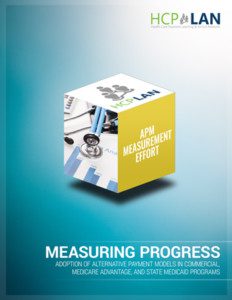
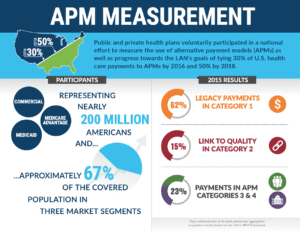
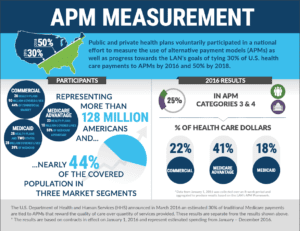
After the release of the Framework, the LAN’s Payer Collaborative, comprised of a diverse mix or public and private health plans, convened to further shape and inform the LAN’s approach for measuring progress in adopting APMs. In mid-February, the Payer Collaborative launched a five-week pilot to determine the feasibility of obtaining internal data from plans and also to understand the investment of time and resources needed to complete the data collection. This pilot was an essential step in ensuring that the APM Framework – and the measurement aligned with it – was “road tested.” It allowed the LAN to refine the methodology and to develop precise definitions for measurement before launching the national measurement effort. This first LAN APM Measurement Effort requested health plans to provide data through two different methodologies:
- The 2015 look-back metrics, which is a retrospective view, asked health plans to report actual dollars paid to providers during 2015 or the most recent 12 months.
- The 2016 point-in-time metrics, which was somewhat of a prospective view, asked health plans to report dollars paid to providers based on contracts in place on January 1, 2016. Health plan dollars could be reported as the number of members attributed to APMs multiplied by an average cost per member per year. Alternatively, health plans could report the most recent spend data that was available.
When the LAN combined this data with that of the Blue Cross Blue Shield Association (BCBSA), and America’s Health Insurance Plans (AHIP), the results demonstrated the following:
- 62% of health care dollars in Category 1
- 15% of health care dollars in Category 2
- 23% of health care dollars in a composite of Categories 3 and 4
A total of 70 health plans and two Medicaid FFS states participated in this initial LAN effort, representing approximately 199 million of the nation’s covered lives, and 67% of the national market (excluding FFS Medicare). More information on the LAN’s first APM Measurement Effort can be found in this APM Measurement Effort report.
Publication Info
Publication date: October 25, 2016
17 pages
Suggested Citation: Health Care Payment Learning & Action Network. Measuring Progress: Adoption of Alternative Payment Models in Commercial, Medicaid, Medicare Advantage, and Fee-for-Service Medicare Programs. October 25, 2016.
The survey sought to quantify the amount of health plan in- and out-of-network spending that flows through APMs – including key areas of pharmacy and behavioral health spending (if data were available). Each of the questions in the survey tracked to the categories and subcategories of the APM Framework. The LAN collected data through two different methodologies:
-
- The 2015 look-back metrics, which is a retrospective view, asked health plans to report actual dollars paid to providers during 2015 or the most recent 12 months.
-
- The 2016 point-in-time metrics, which was somewhat of a prospective view, asked health plans to report dollars paid to providers based on contracts in place on January 1, 2016. Health plan dollars could be reported as the number of members attributed to APMs multiplied by an average cost per member per year. Alternatively, health plans could report the most recent spend data that was available.
For more information on the distinctions between the two methods, please read the final report, Measuring Progress: Adoption of Alternative Payment Models in Commercial, Medicare Advantage, and State Medicaid Programs. For FAQs or to take a look at the metrics, click the links below:
The LAN APM Framework establishes standardized definitions and categories of APMs and a methodology for quantifying the adoption of APMs across the public and private sectors. The original LAN APM Framework was developed by the Alternative Payment Models Framework and Progress Tracking (APM FPT) Work Group, which was composed of public and private stakeholders and convened by the LAN Guiding Committee. In mid-2017, a refreshed Framework was released to reflect changes in market dynamics and legislation. For timing and trend reasons, this year’s APM measurement effort used the original Framework. 


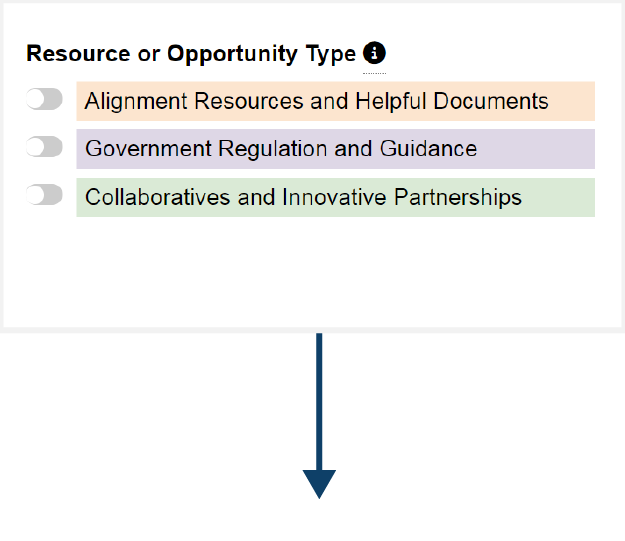
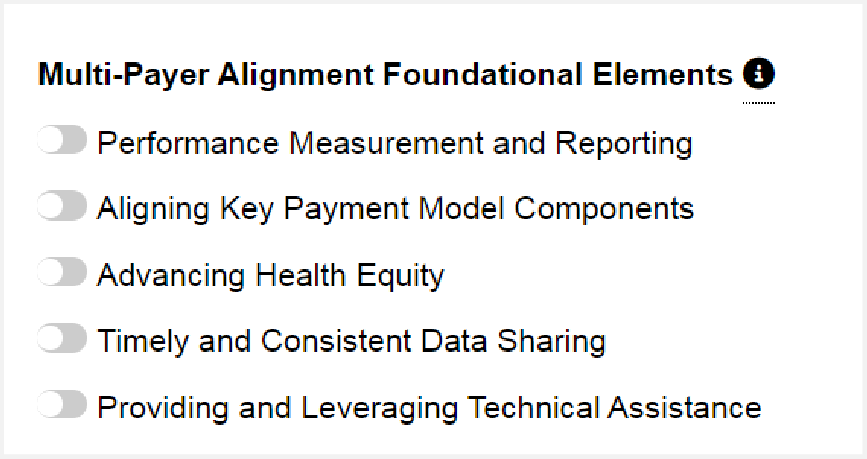




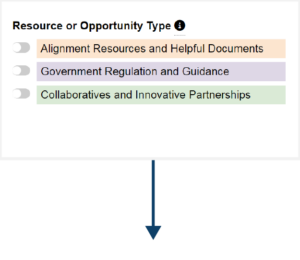

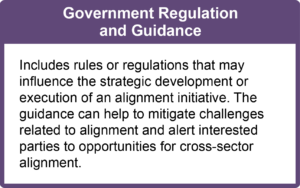
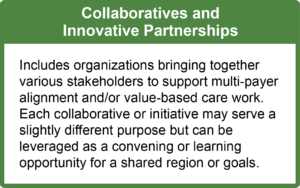
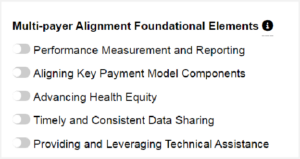




 Emily DuHamel Brower, M.B.A., is senior vice president of clinical integration and physician services for Trinity Health. Emphasizing clinical integration and payment model transformation, Ms. Brower provides strategic direction related to the evolving accountable healthcare environment with strong results. Her team is currently accountable for $10.4B of medical expense for 1.6M lives in Medicare Accountable Care Organizations (ACOs), Medicare Advantage, and Medicaid and Commercial Alternative Payment Models.
Emily DuHamel Brower, M.B.A., is senior vice president of clinical integration and physician services for Trinity Health. Emphasizing clinical integration and payment model transformation, Ms. Brower provides strategic direction related to the evolving accountable healthcare environment with strong results. Her team is currently accountable for $10.4B of medical expense for 1.6M lives in Medicare Accountable Care Organizations (ACOs), Medicare Advantage, and Medicaid and Commercial Alternative Payment Models. Mr. James Sinkoff is the Deputy Executive Officer and Chief Financial Officer for Sun River Health (formerly known as Hudson River HealthCare), and the Chief Executive Officer of Solutions 4 Community Health (S4CH); an MSO serving FQHCs and private physician practices.
Mr. James Sinkoff is the Deputy Executive Officer and Chief Financial Officer for Sun River Health (formerly known as Hudson River HealthCare), and the Chief Executive Officer of Solutions 4 Community Health (S4CH); an MSO serving FQHCs and private physician practices. Victor is the Chief Medical Officer for TennCare, Tennessee’s Medicaid Agency. At TennCare, Victor leads the medical office to ensure quality and effective delivery of medical, pharmacy, and dental services to its members. He also leads TennCare’s opioid epidemic strategy, social determinants of health, and practice transformation initiatives across the agency. Prior to joining TennCare, Victor worked at Evolent Health supporting value-based population health care delivery. In 2013, Victor served as a White House Fellow to the Secretary of Health and Human Services. Victor completed his Internal Medicine Residency at Emory University still practices clinically as an internist in the Veteran’s Affairs Health System.
Victor is the Chief Medical Officer for TennCare, Tennessee’s Medicaid Agency. At TennCare, Victor leads the medical office to ensure quality and effective delivery of medical, pharmacy, and dental services to its members. He also leads TennCare’s opioid epidemic strategy, social determinants of health, and practice transformation initiatives across the agency. Prior to joining TennCare, Victor worked at Evolent Health supporting value-based population health care delivery. In 2013, Victor served as a White House Fellow to the Secretary of Health and Human Services. Victor completed his Internal Medicine Residency at Emory University still practices clinically as an internist in the Veteran’s Affairs Health System. Dr. Brandon G. Wilson, DrPH, MHA (he, him, his) joined Community Catalyst as the Director of the Center for Consumer Engagement in Health Innovation, where he leads the Center in bringing the community’s experience to the forefront of health systems transformation and health reform efforts, in order to deliver better care, better value and better health for every community, particularly vulnerable and historically underserved populations. The Center works directly with community advocates around the country to increase the skills and power they have to establish an effective voice at all levels of the health care system. The Center collaborates with innovative health plans, hospitals and providers to incorporate communities and their lived experience into the design of systems of care. The Center also works with state and federal policymakers to spur change that makes the health system more responsive to communities. And it provides consulting services to health plans, provider groups and other health care organizations to help them create meaningful structures for engagement with their communities.
Dr. Brandon G. Wilson, DrPH, MHA (he, him, his) joined Community Catalyst as the Director of the Center for Consumer Engagement in Health Innovation, where he leads the Center in bringing the community’s experience to the forefront of health systems transformation and health reform efforts, in order to deliver better care, better value and better health for every community, particularly vulnerable and historically underserved populations. The Center works directly with community advocates around the country to increase the skills and power they have to establish an effective voice at all levels of the health care system. The Center collaborates with innovative health plans, hospitals and providers to incorporate communities and their lived experience into the design of systems of care. The Center also works with state and federal policymakers to spur change that makes the health system more responsive to communities. And it provides consulting services to health plans, provider groups and other health care organizations to help them create meaningful structures for engagement with their communities. Tamara Ward is the SVP of Insurance Business Operations at Oscar Health, where she leads the National Network Contracting Strategy and Market Expansion & Readiness. Prior to Oscar she served as VP of Managed Care & Network Operations at TriHealth in Southwest Ohio. With over 15 years of progressive health care experience, she has been instrumental driving collaborative payer provider strategies, improving insurance operations, and building high value networks through her various roles with UHC and other large provider health systems. Her breadth and depth of experience and interest-based approach has allowed her to have success solving some of the most complex issues our industry faces today. Tam is passionate about driving change for marginalized communities, developing Oscar’s Culturally Competent Care Program- reducing healthcare disparities and improving access for the underserved population. Tamara holds a B.A. from the University of Cincinnati’s and M.B.A from Miami University.
Tamara Ward is the SVP of Insurance Business Operations at Oscar Health, where she leads the National Network Contracting Strategy and Market Expansion & Readiness. Prior to Oscar she served as VP of Managed Care & Network Operations at TriHealth in Southwest Ohio. With over 15 years of progressive health care experience, she has been instrumental driving collaborative payer provider strategies, improving insurance operations, and building high value networks through her various roles with UHC and other large provider health systems. Her breadth and depth of experience and interest-based approach has allowed her to have success solving some of the most complex issues our industry faces today. Tam is passionate about driving change for marginalized communities, developing Oscar’s Culturally Competent Care Program- reducing healthcare disparities and improving access for the underserved population. Tamara holds a B.A. from the University of Cincinnati’s and M.B.A from Miami University.


 Dr. Peter Walsh joined the Colorado Department of Health Care Policy and Financing as the Chief Medical Officer on December 1, 2020. Prior to joining HCPF, Dr. Walsh served as a Hospital Field Representative/Surveyor at the Joint Commission, headquartered in Oakbrook Terrace, Illinois.
Dr. Peter Walsh joined the Colorado Department of Health Care Policy and Financing as the Chief Medical Officer on December 1, 2020. Prior to joining HCPF, Dr. Walsh served as a Hospital Field Representative/Surveyor at the Joint Commission, headquartered in Oakbrook Terrace, Illinois.








